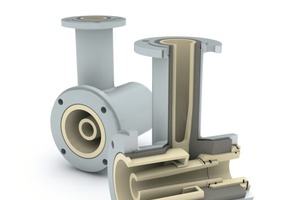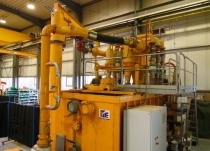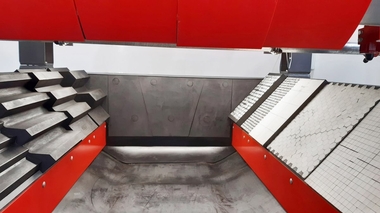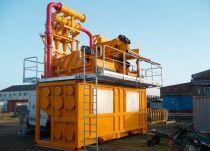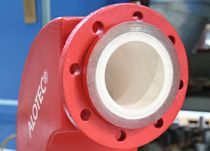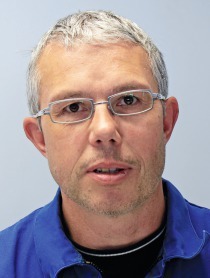New wear resistant hydrocyclones by CERA SYSTEM make this possible
The Thuringian ceramics specialist CERA SYSTEM Verschleißschutz GmbH now also develops hydrocyclones in mineral composite, aluminium oxide, silicon carbide and silicon nitride. The cyclones are suitable for separating solids and liquids whose particles do not mix or do not dissolve in the carrier medium. This is particularly significant for industries working with slurries. As part of the process the material mixture is fed into the cyclone head via an inlet nozzle, which creates a rotating flow. This has an extremely high centrifugal force, which may be larger than gravity. To that effect strong frictional and abrasive forces exist, which clog the cyclone wall.
“Many of our customers have systems for separating particles – a logical conclusion from this was to also use ceramic materials there. These are particularly effective and are also suitable for applications at high temperatures,” says Heinz Albert, Technical Director of CERA SYSTEM Verschleißschutz GmbH, describing the development idea for the low-wear hydrocyclones in mineral composite.
In order to protect the ceramic components even more from mechanical damage, these are designed in metal housings or wrapped with glass fibre reinforced plastic. This allows pipeline and pressure forces to be absorbed and for heat to be insulated. The use of cyclones is particularly beneficial, if the particles are to be separated between 0.5 mm and 5 μm. The time efficiency is noteworthy: Cyclones can – at accordingly high rotation speed – separate the particles up to 1000 times faster than with the gravimetric sedimentation process.
Coarser particles over 0.5 mm can generally be separated more simply, using sedimentation tanks. But also particles under 5 μm can be separated in special hydrocyclones with a very small diameter. It is possible to connect the cyclones by CERA SYSTEM together in a ring battery or in a multi cyclone system; this increases the throughput capacity. Customers, who desire a higher degree of separation, but also the separation of finer particles, can simply connect the cyclones into series.
Halle 5, Stand 146

